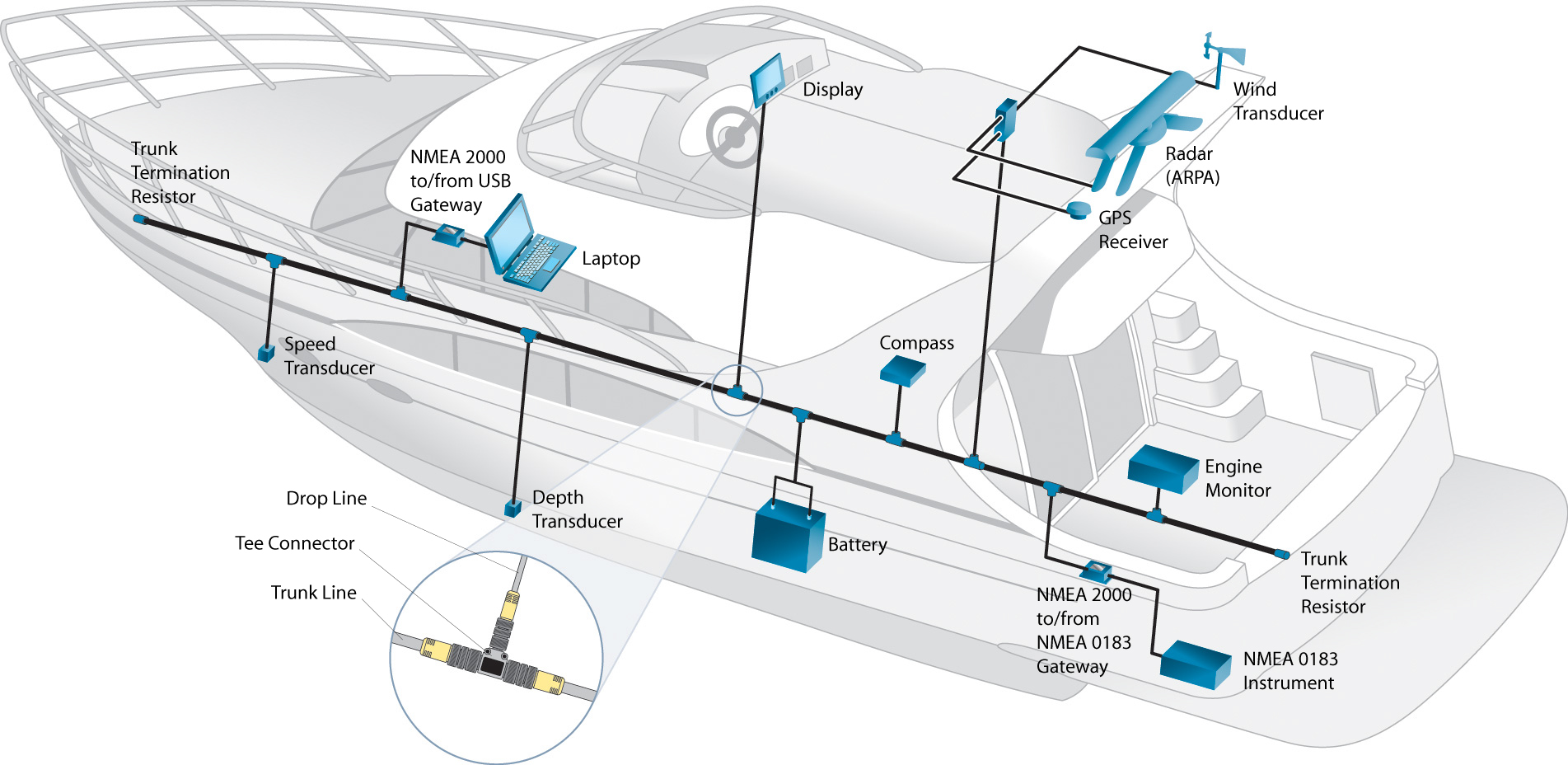|
Fast Data EXchange
FDX, short for Fast Data eXchange is a proprietary maritime communication protocol by Nexus Marine AB. It describes how data points from sensors are to be sent across an RS485 serial bus to displays. FDX was originally developed in the 1990s, and is now mostly seen as a legacy protocol. The GND10 gateway from Garmin translates FDX into NMEA 2000, to be able to continue using Nexus sensors on more recent NMEA 2000 NMEA 2000, abbreviated to NMEA2k or N2K and standardised as IEC 61162-3, is a plug-and-play communications standard used for connecting marine sensors and display units within ships and boats. Communication runs at 250 kilobits-per-second and allows ... networks. References {{reflist External links FDX introduction from Nexus Marine* http://www.cruisersforum.com/forums/f13/nexus-bus-or-fdx-protocol-164575.html Github: Reverse engineered FDX parser Global Positioning System Computer buses Marine electronics ... [...More Info...] [...Related Items...] OR: [Wikipedia] [Google] [Baidu] |
NMEA 2000
NMEA 2000, abbreviated to NMEA2k or N2K and standardised as IEC 61162-3, is a plug-and-play communications standard used for connecting marine sensors and display units within ships and boats. Communication runs at 250 kilobits-per-second and allows any sensor to talk to any display unit or other device compatible with NMEA 2000 protocols. Details Electrically, NMEA 2000 is compatible with the Controller Area Network ("CAN Bus") used on road vehicles and fuel engines. The higher-level protocol format is based on SAE J1939, with specific messages for the marine environment. Raymarine SeaTalk 2, Raymarine SeaTalkNG, Simrad Simnet, and Furuno CAN are rebranded implementations of NMEA 2000, though may use physical connectors different from the standardised DeviceNet 5-pin A-coded M12 screw connector, all of which are electrically compatible and can be directly connected. The protocol is used to create a network of electronic devices—chiefly marine instruments—on a boat. Vario ... [...More Info...] [...Related Items...] OR: [Wikipedia] [Google] [Baidu] |
Global Positioning System
The Global Positioning System (GPS), originally Navstar GPS, is a satellite-based radionavigation system owned by the United States government and operated by the United States Space Force. It is one of the global navigation satellite systems (GNSS) that provides geolocation and time information to a GPS receiver anywhere on or near the Earth where there is an unobstructed line of sight to four or more GPS satellites. It does not require the user to transmit any data, and operates independently of any telephonic or Internet reception, though these technologies can enhance the usefulness of the GPS positioning information. It provides critical positioning capabilities to military, civil, and commercial users around the world. Although the United States government created, controls and maintains the GPS system, it is freely accessible to anyone with a GPS receiver. The GPS project was started by the U.S. Department of Defense in 1973. The first prototype spacecraft was lau ... [...More Info...] [...Related Items...] OR: [Wikipedia] [Google] [Baidu] |
Computer Buses
In computer architecture, a bus (shortened form of the Latin '' omnibus'', and historically also called data highway or databus) is a communication system that transfers data between components inside a computer, or between computers. This expression covers all related hardware components (wire, optical fiber, etc.) and software, including communication protocols. Early computer buses were parallel electrical wires with multiple hardware connections, but the term is now used for any physical arrangement that provides the same logical function as a parallel electrical busbar. Modern computer buses can use both parallel and bit serial connections, and can be wired in either a multidrop (electrical parallel) or daisy chain topology, or connected by switched hubs, as in the case of Universal Serial Bus (USB). Background and nomenclature Computer systems generally consist of three main parts: * The central processing unit (CPU) that processes data, * The memory that holds the p ... [...More Info...] [...Related Items...] OR: [Wikipedia] [Google] [Baidu] |


